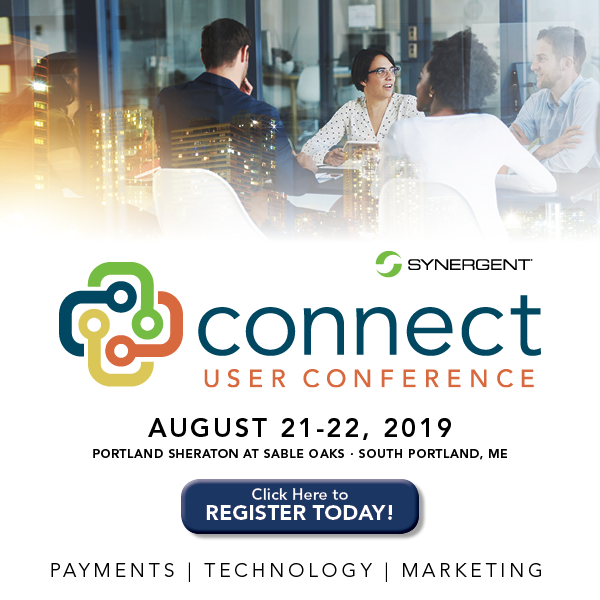
Living in a highly digital world has ample benefits for members, such as the convenience of managing their money via mobile and online banking through a device that fits in their back pockets. However, with more digital conveniences comes a wider range of factors for your members to consider so they may keep their personal, private information exactly that—personal and private.
Educating members can protect both them and your credit union from being a victim of fraud. Below, are some tips to share with your members to educate them about conducting safe in-person transactions while using ATMs, point-of-sale terminals, and gas pumps. These tips can be shared in conversation, in your newsletter, or on social media.
Be Aware of Your Surroundings
Before walking up to the machine, take note of where you are. If you notice one or more suspicious people near the machine, do not use that ATM at that time. It is best to leave and find one in a different location. If all looks good, prepare by having your ATM card out of your wallet before you exit your car and reach the machine; this saves time and allows you to be focused while using the ATM instead of being distracted by looking for your card.
If using an ATM at night, be sure to locate a machine in a well-lit area and park close; if using a drive-up ATM, ensure all windows are rolled up and all doors are locked before stopping. ATMs in well-lit, indoor locations—especially within sight of employees—are less likely to target users for fraud.
Cover the Keypad When Entering Your PIN
To be sure nobody else will see, remember, or write down your PIN, be sure to use your other hand and/or your body to hide the keypad while you enter your PIN.
Similarly, keep your PIN secure by never writing it down and never telling it to anyone. It is especially important not to write the PIN on the back of your ATM card. If it were to fall into the wrong hands, it would make it incredibly easy for bad actors to steal from you.
Visually Check for Skimmers
Fraudsters will often illegally place skimming devices on card readers (ATMs, point-of-sale terminals, or fuel pumps) to capture card information and record users’ PINs. The FBI notes how “criminals use the data to create fake debit or credit cards and then steal from victims’ accounts,” and on average annually, “it is estimated that skimming costs financial institutions and consumers more than $1 billion each year.” Skimming devices are most common in tourist areas, and Maine has an abundance of spots for vacationers!
Forbes also warns to “check that the card reader doesn’t look different than other readers (mostly for gas pumps), scan the reader for any alignment issues that would show the machine has been tampered with, and changes in any tape, stickers, and/or sticky residue.”
Scammers sometimes will employ pinhole cameras alongside their skimming devices, which sit at an angle to record users’ PINs as they enter them. Alternatively, they may use a keypad overlay to record keystrokes. Regardless, you can pull at the edges of the keypad to check and cover your PIN-typing hand from above to hide the entered number from any pinhole cameras.
Be Sure the Transaction is Complete Before Walking Away
Oftentimes, ATMs will ask users if they’d like to make another transaction while at the machine once completing the initial transaction. Some people forget to click “No” if they are finished at the ATM, but this is an essential step to take to ensure your privacy and security. If you do not click through to end your session, it will remain open for the next ATM user, giving them the chance to view your accounts and/or withdraw money,
The same goes for receipts—be sure to click “No” if you don’t want your receipt printed. This leaves your transaction session open for the next user to walk up and continue. If they aren’t there with the best intentions, this can put you at risk of losing funds in your account. Additionally, the next user could opt to print your receipt if you do not fully close out your transaction, and since you already entered your PIN, the receipt will display sensitive account information that you would not want in another’s hands.
Once the transaction finishes, try not to be obvious when counting that the cash is all there. It is best not to show how much you have withdrawn or where you put it if possible, as it can draw the attention of malicious people.
Keep Cards in a Secure Location
You should always store all your banking cards—both credit/debit cards and any account/member ID cards—in a safe, secure place. Do not leave them lying around on tables or desks at home or work, as it leaves your information vulnerable to anyone who walks by. Ensure you (and any joint users on the account, if applicable) are the only one(s) with access to these cards and report them lost or stolen to your financial institution(s) if you lose possession of them. It’s important to remember that your credit union is always here to help.
Never Give Your PIN Over the Phone
Your credit union will never ask you to verify your PIN over the phone. If you receive a call stating they are a representative from your financial institution or the police asking for this information, hang up and call the institution’s Member Care Center directly to see if they really called. Chances are, the person doing the calling was a scammer who was attempting to steal your information.
Stay Up to Date
Check local news outlets often to stay apprised of the most recent and active scams in your area. The Federal Trade Commission and the FBI are also trusted resources on fraud and scams and how to stay safe. Review these outlets regularly.
The Bottom Line
You can never be too careful with your personal information. Fraud is not going anywhere, so it becomes the user’s responsibility to stay knowledgeable regarding best practices to keep private information safe and secure.
If you have any questions or concerns, contact your credit union.
Synergent Is Here to Help
As always, Synergent is here to help. Please contact us with any questions you may have.

